Continental Toy Spaniel: characteristics and tips for content

The Continental Toy Spaniel is a rare dwarf breed with an original decorative appearance and good character. Its second name - papillon or phalene - is used depending on the set of the dog's ears. Breed standards are developed for both species and make it easy to determine which type of animal is.
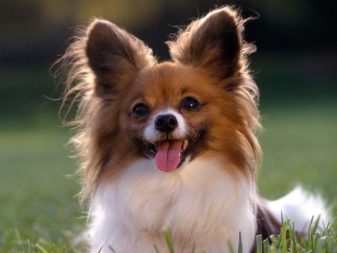
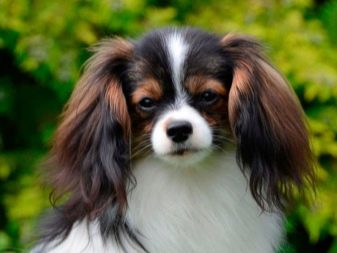
A description of a pygmy spaniel always begins with an indication of its size and weight. But for amateur breeders, the visual appeal, obedience and ease of character of this companion dog is much more important. The characteristics and tips on the content will be of interest to those who are just planning to purchase this dog.
Origin story
The decorative Continental Toy Spaniel breed of dogs appeared in the Middle Ages, when the fashion for dwarf pets penetrated European castles and palaces. Documentary evidence of its existence has been known since the 13th century. Renaissance painters especially often depicted continental toy spaniels in their canvases.
Papillons, which have original erect ears, open like the wings of a butterfly, are more like modern toy terriers. Hanging-eared phalens bear similarities to other breeds of spaniels. However, apart from the shape of the ears, dogs have no differences. They are tiny and easy to maintain.

There is no consensus regarding the original historical origin of the Continental Toy Spaniel. There are opinions that the roots of the breed lead to the territory of Belgium or France.But the kinship with the German dwarf spitz is not denied by all dog handlers - it was from them that the dog received its bright appearance and characteristic edge on the ears, neck, paws, tail. As another ancestor of the toy spaniel, the Espanyol-nen breed, popular among the Belgian aristocracy, is mentioned.

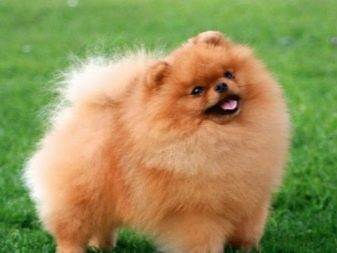
For centuries, continental toy spaniels lived in the most comfortable conditions and were the favorites of monarchs throughout Europe. But by the 19th century, their popularity was declining. The new bourgeois currents did not welcome the spread of the attributes of luxury, which included dwarf dogs. However, loyal fans of the phalene and papillons have existed at all times. It is thanks to these enthusiasts that the breed has survived to this day.
Description
The Continental Toy Spaniel breed standard carefully describes all its characteristics. Dwarf animals are distinguished by their compact, strong, but at the same time graceful constitution. Miniature pets grow up to 28 cm and gain body weight from 2.5 to 5 kg. The lifespan of the continental toy spaniel is up to 14 years.


According to the current breed standard, dogs must have the following characteristics:
- long thick coat with a characteristic shine, without undercoat, with a curl;
- color - spotted, always on a white background, the shape and color of the markings are not regulated, a snow-white blaze on the forehead is desirable;
- thin-boned limbs with hare-type feet, hard paw pads;
- tail set high, well furred, throwing on its back when the animal is experiencing revival;
- frame compact, the loin is slightly convex, the groin is slightly tucked;
- wide, well-defined chestcurved forward;
- ears set wide, thin, outside and inside covered with long soft hair;
- eyes set low, almost in the region of the bridge of the nose, almond-shaped, rather large, dark brown in color;
- lips brightly pigmented, dry, tight-fitting;
- teeth white, with strong jaws, closed in a scissor bite;
- scull slightly rounded, with a clear stop and a median groove, a pointed muzzle;
- nose black color.
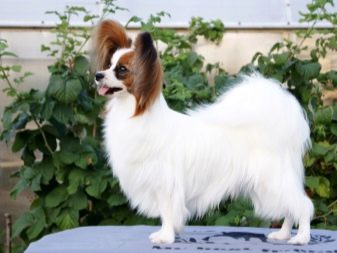
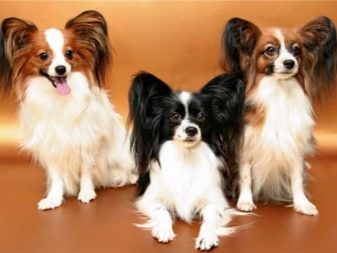
Breeding marriage includes continental toy spaniels that have obvious defects in appearance. These include non-closing of the jaws, behavioral defects - cowardice, aggressiveness. A flat skull, too small or overly protruding eyeballs are considered undesirable. A brown or depigmented nose, a distorted bridge of the nose, the presence of pink specks on the eyelids is considered a marriage.

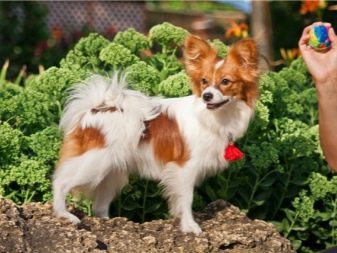
By its temperament, the Continental Toy Spaniel belongs to balanced, calm dogs that can be affectionate with the owner and distrustful of strangers. The animal has a cheerful, playful disposition, loves entertainment and active pastime, gets along with children. It can be purchased as a companion and obtained a loyal companion for years to come.
In the absence of due attention to them, the phalens and papillons are quite jealous - You can compensate for this moment by taking two puppies at once, which will brighten up each other's leisure in the absence of the owner.
Feeding
Continental Toy Spaniels, like other related breeds, tend to overeat, easily gain fat mass. But if a slight plumpness of the body is acceptable for a puppy, it spoils an adult dog. That is why, upon reaching the age of six months, the animals are transferred to a full-fledged adult diet with food 2-3 times a day.
The feeding schedule should be clearly established, feeding hours should be delimited with walking time so that the food has time to be absorbed.
A puppy's diet usually includes high-energy foods - natural meat and liver, carefully cut into small pieces. The diet also includes vegetables - boiled and fresh, low-fat dairy products.About 30% of the diet is occupied by cereals, dairy or cooked in meat broth. With natural feeding, it is imperative to introduce additional vitamin and mineral supplements to enrich the nutrition with the necessary substances.

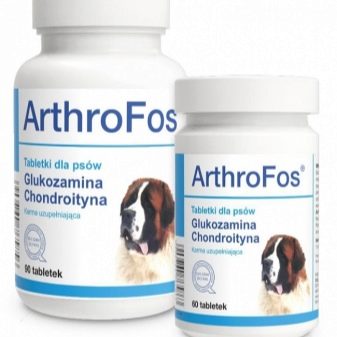
The optimal solution for an adult Continental Toy Spaniel is to receive ready-made food for small dogs twice a day. It is permissible to use only premium and super-premium products, as well as the holistic category.
Adult animals should not be given puppy food or cheap economy class rations, as they will not benefit the animal.
Standard amounts of food for an adult dog - 200-300 g per day, you can dilute the finished food with broth for better assimilation.


A number of foods are banned for Continental Toy Spaniels:
- nuts and legumes that can lead to obesity;
- smoked meats;
- carbohydrate-rich vegetables and fruits (potatoes, grapes, melon);
- sweet and flour treats;
- fried foods;
- raw or boiled bones;
- part of animal products - pork, butter, fat milk.
Care
Due to the fact that the continental toy spaniel is compact in size, its maintenance does not cause trouble for the owner. There is enough space for a dog both in a city small-sized apartment and in a country house. But the absence of undercoat requires the purchase of a warm winter blanket or overalls for them, in addition, the stove bench in the house should also be placed away from drafts.... In summer, animals can get sunstroke if they are in the sun for a long time - in the midday heat it is better to walk in the shade.

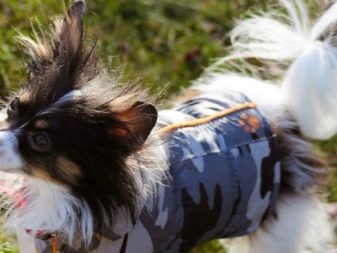
The naturally neat Continental Toy Spaniel usually does not seek to conquer bushes or take mud baths - during walks, the animal stays clean... But caring for their fur is still time-consuming. Animals need careful brushing every day to avoid tangling. Dogs are periodically cut, washed, ensuring that their hygiene is maintained at a high level. Treatment for parasites is mandatory, measures are taken to prevent infestation by fleas and ticks.
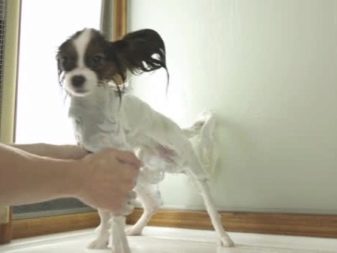

Continental toy spaniels have a rather vulnerable dentition and tartar easily form in them, which must be removed regularly. At home, cleaning is carried out several times, using a special veterinary paste. Periodically, you should also visit the dentist's office - for examination and professional removal of plaque and calculus.
The auricles of both phalens and papillons must be carefully examined, cleaned of contamination, sulfur released. Any change in the nature of plaque, anxiety of the dog, thickening of the auricles - a reason for contacting a veterinarian.
Claw trimming is carried out at least once every 2-3 weeks.
With regard to walking, animals need to satisfy their physical activity - at least 1-3 hours a day, the continental toy spaniel should be in motion, in the fresh air. In winter, double walks persist, but become shorter.

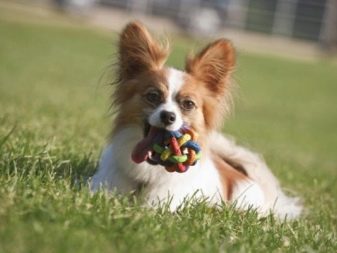
Education and training
Despite their cute and outgoing personality, Continental Toy Spaniels have an enviable stubbornness when it comes to training. However, if you turn your studies into a game, Phalene or Papillon will gladly support it and easily master the necessary skills.
High intelligence (according to some estimates, dogs rank 8th among all breeds in terms of intelligence) gives them the opportunity to learn a variety of tricks.
Training usually starts at 3-4 months. By this time, the puppy should have already learned its nickname, know where its toilet is, its place. Continental Toy Spaniels are fairly easy to litterize and keep the house clean. This is very convenient if the owner spends all day at work and the animal is left alone.

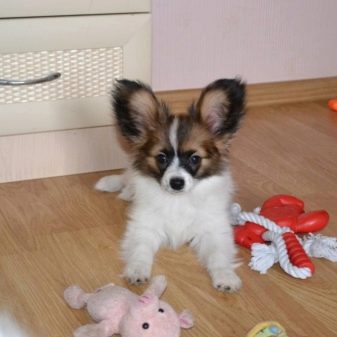
The study of the basic set of commands - "Come to me", "You must not", "Fu", "Voice", "Sit", "Lie down" - is carried out in stages, with a repetition of the already mastered skills... You can use a treat to solidify the skill you want. During training, you should not raise your voice, show aggression, but letting your pet be stubborn is a bad move. It is better to find a compromise, change activities for a while, and then return to mastering a complex team again.
It should be noted that dogs of this breed can easily cope with the study of much more complex tricks. For example, they keep good balance on their hind legs, are able to rotate around themselves, demonstrate other unusual skills, and even participate in agility.


See below for more details on the Continental Toy Spaniel.






































